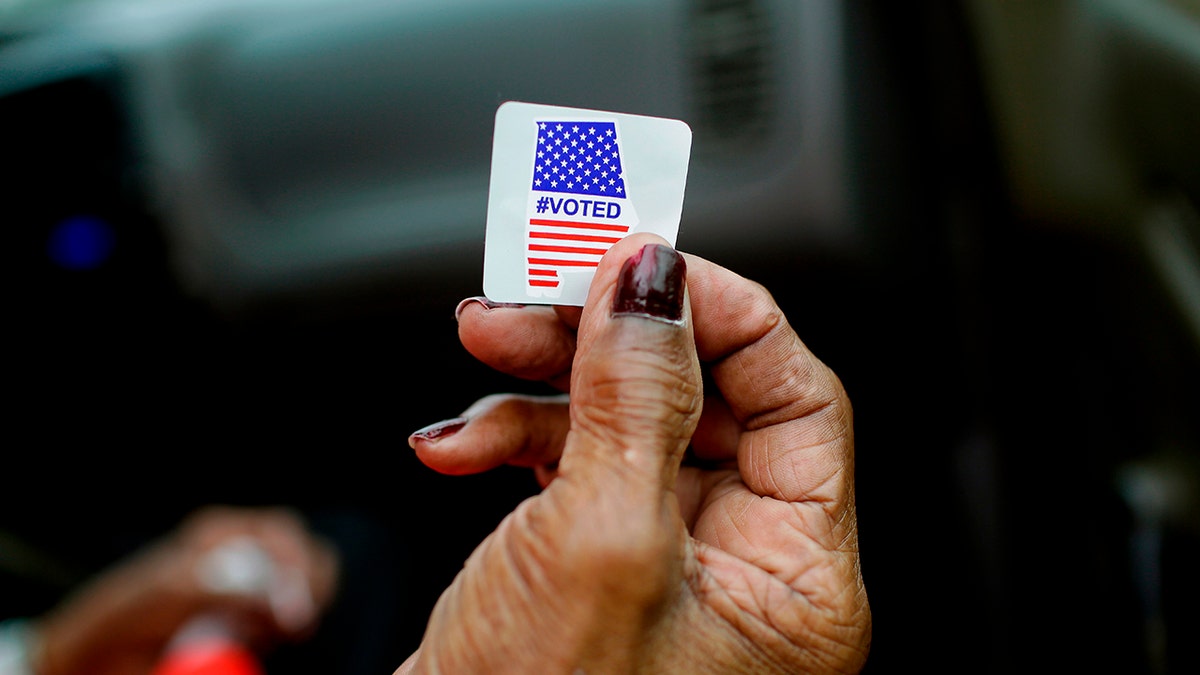Tammy Bruce: Kamala Harris is 'collapsing' with key voting demographics
Fox News contributor Tammy Bruce and former Pennsylvania Rep. Patrick Murphy join 'America Reports' to discuss the upcoming Republican debate and President Biden's latest 2024 advertising campaign.
Alabama will have to draft new congressional lines after federal judges struck down a proposal Tuesday from state lawmakers as it did not include a second Black-majority district, as the court previously suggested.
A three-judge panel struck down a congressional map in 2022 and said any new map should include an additional majority-Black district "or an additional district in which Black voters otherwise have an opportunity to elect a representative of their choice." The U.S. Supreme Court later upheld the panel’s decision.
In their ruling, the three-judge panel for the U.S. District Court for the Southern District of Alabama said they were "deeply troubled" that the state's newly drawn congressional map did not adhere to their guidance and that a third attempt would have to be redrawn by a special master.
Alabama is expected to appeal Tuesday’s decision to the U.S. Supreme Court.

Federal judges said Tuesday, Sept. 5, that they will draft new congressional lines for Alabama after lawmakers refused to create a second district where Black voters at least came close to comprising a majority, as suggested by the court. (JOSHUA LOTT/AFP via Getty Images)
The decision comes after the state’s initially proposed congressional map — that had one majority-Black district out of seven in a state where 27% of residents are Black — was denied last year by the three-judge panel.
The panel then issued the guidance to include a second Black-majority district or "something quite close."
Alabama lawmakers responded in July by passing the latest iteration, which maintained a single majority-Black district but increased the percentage of Black voters in District 2 from about 30% to almost 40%.
SUPREME COURT RULES IN FAVOR OF BLACK VOTERS IN ALABAMA RACIAL GERRYMANDERING CASE
"We are not aware of any other case in which a state legislature — faced with a federal court order declaring that its electoral plan unlawfully dilutes minority votes and requiring a plan that provides an additional opportunity district — responded with a plan that the state concedes does not provide that district," the judges wrote. "The law requires the creation of an additional district that affords Black Alabamians, like everyone else, a fair and reasonable opportunity to elect candidates of their choice."
The panel definitively added, "The 2023 Plan plainly fails to do so."

Alabama is expected to appeal Tuesday’s decision to the U.S. Supreme Court. (AP Photo/Kim Chandler)
However, the state disagreed.
Alabama Solicitor General Edmund LaCour argued during a hearing last month that the newly drawn map — with just one Black-majority district — best protects the interests of voters and complies with the U.S. Supreme Court’s opinion on the Voting Rights Act.
ALABAMA REPUBLICANS' REDISTRICTING PROPOSAL IS AN INSULT TO THE SUPREME COURT, BLACK LAWMAKERS SAY
"District 2 is as close as you are going to get to a second majority-Black district without violating the Supreme Court's decision," LaCour said at the time.
He also argued that creating a second majority-Black district would mean violating traditional redistricting principles, such as keeping communities of interest together.

Statewide, former President Trump overwhelmingly carried Alabama with 62.2% over President Biden’s 36.7%. (Andi Rice/Bloomberg via Getty Images)
"What I hear you saying is the state of Alabama deliberately chose to disregard our instructions to draw two majority-Black districts or one where minority candidates could be chosen," Judge Terry Moorer said to LaCour.
The feud is expected to reach the U.S. Supreme Court and could impact local elections. Statewide, former President Trump overwhelmingly carried Alabama with 62.2% over President Biden’s 36.7%. Just over 1% went to the libertarian candidate.
The Associated Press contributed to this report.

























